TOP CHANGTRAKUL HAS COME BACK HOME FOR HIS BANGKOK DEBUT OF “THE ANGARUS PROJECT” AT H GALLERY.
It is widely known that art is about a variety of expressions. Its presentation has changed from time to time. Many artists create to keep or modify the beauty of nature via their imagination; many reflect or question critical social issues at certain times, some merely express their personal feelings through their art, while many aim to annoy the familiarity of our surroundings. Art becomes both more complicated with lots of hidden messages and, as simple as ready-made objects that we use in everyday life such as Duchamp’s urinal. It’s the new beginnings that lead us to question, what is art really about? Is it the process or the outcome, ephemeral thoughts or long term sophisticated finishes.

A Thai artist who is a hit on the New York art scene, Top Changtrakul is amongst the artists whose art satirically questions our views of art in terms of thoughts. Having a Bechelor degree in Sculpture with a business minor from University of San Francisco and a Masters in Video and Performance from San Francisco Art Institute, Top Changtrakul combines multi disciplines in his art ranging from sculpture, video, performance to installations. He is smart enough to integrate humour and exoticism of his Thai background into his works, which are also related to some kind of scientific methods. Many pieces seem like experiments from a genius scientist’s laboratory. For example. “Recent Inventions” shown the Lance Fung Gallery in New York in 1999, features a large wooden hut with low-tech gadgetry, which would have looked very modern 30-40 years ago. Nearby, a video monitor resting on its side shows a hilarious black and white film in which police raid the same hut situated in a rural setting outside Bangkok. Top impressed us with a multi layer of meanings in his works – the conflict of modern and the old fashioned, art and science. Top is also included in the collective of 50 leading architects and artists around the world such as morphosis, Tadao Ando, Asymptote, Shigeru Ban, Zaha Hadid, MVRDV, Coop Himmelblau, Anish Kapoor, Yoko Ono and many others in the “Snow Show” project. Previewed at Venice Biennale this year, the project features art pieces made of snow and ice as the main structure. The exhibition will be showing in Finland next year.
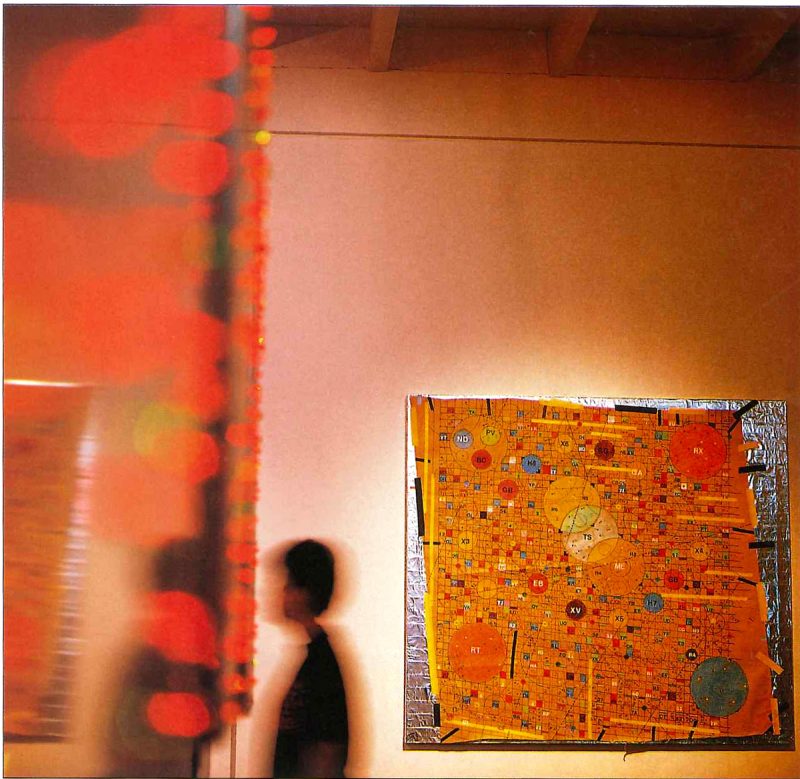
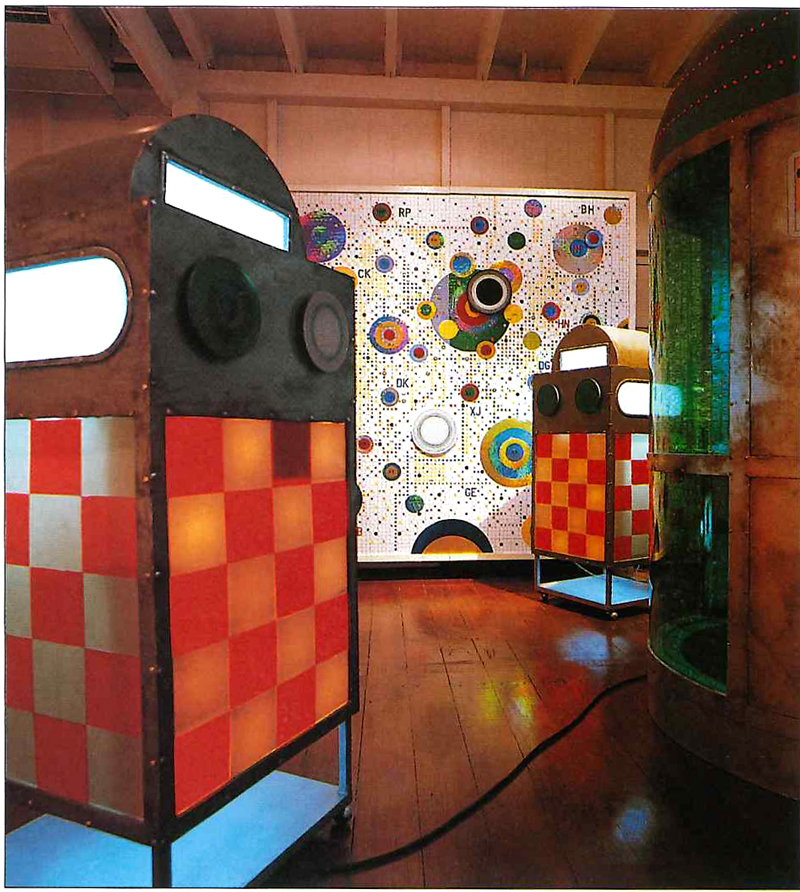
His recent work in Thailand called “The Angarus Project” held at H Gallery, Bangkok, conveys a story with black humour about science fiction. Angarus is the name of an imaginative Island out of this world, and here it stands in the middle of the exhibition room. The walls are full of mathematic and scientific codes. Top adds a modern look with blinking lights all over the walls. A video monitor in a nearby room shows a black and white film of the retro spaceship experiment, Top, himself, plays the role of the astronaut who travels in the spaceship. Opposite to the video monitor, lies the central station consisting of an old computer keyboard, a wooden box and a broken telephone. Behind the console, Top places a spaceship and also attaches some words to describe the behaviors of visitors to this Island, such as “Pad Thai is a food of future”, “One visitor No.. took a picture and develop them in 15 minutes” etc. These sentences along with other nutty explanations by the artist himself are totally nonsensical. In Angarus, everything seems unbelievable and exaggerated.
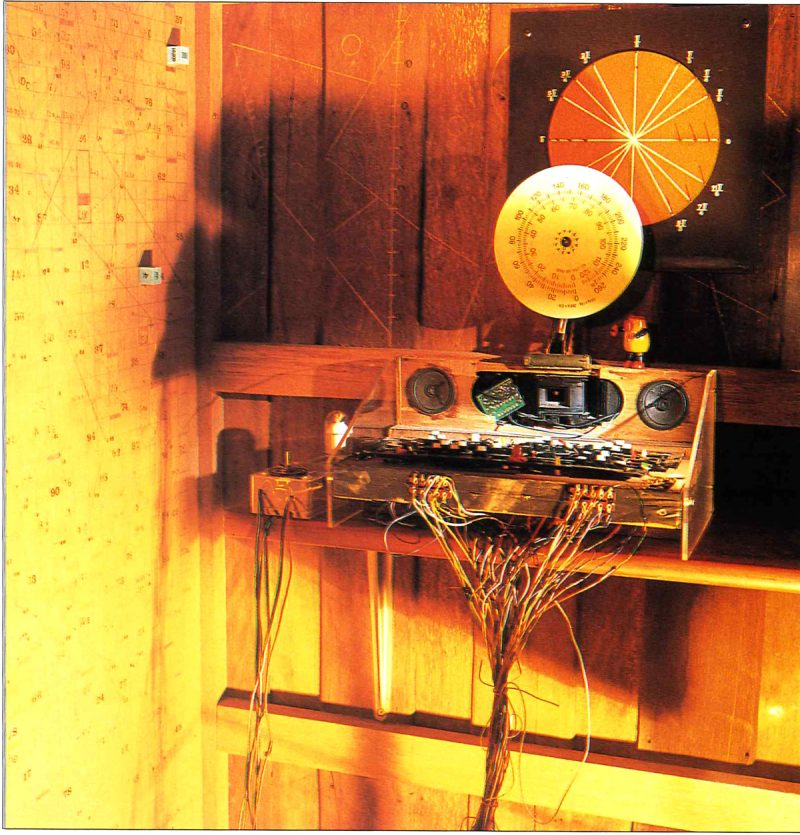
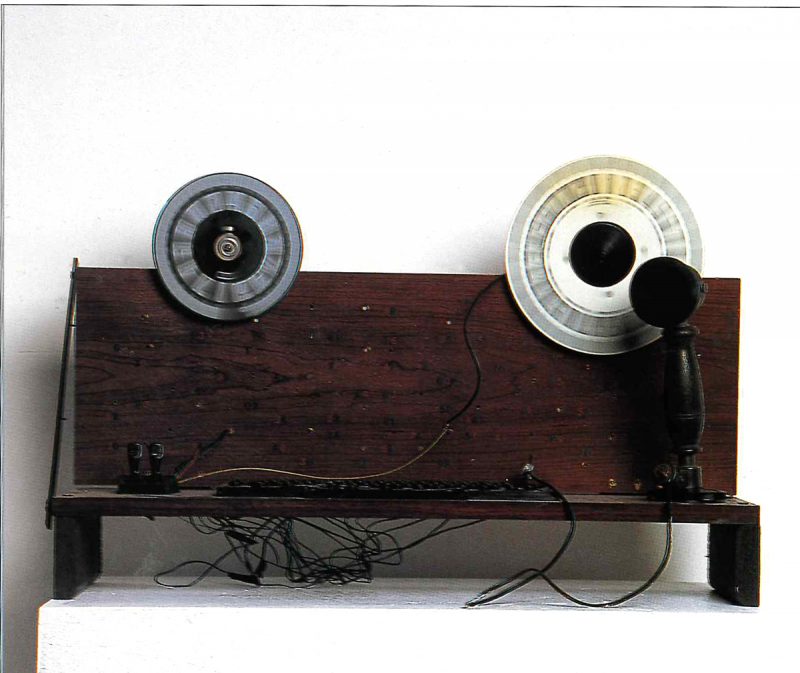

Top’s works have a combination of the will to raise questions and satirically connect to the art scene with ambiguity – Some way see it as a mad man’s expression, some may just smile or some many capture the witty meanings. Eventually, one can judge the value by the essence of his work; the early one who can perceive this value is the artist himself. The reaction of the audience sometimes can neither measure the value of art very much nor lead to any conclusions. What the artist needs to do if he wants the audience to comprehend his work is to focus more on the situation that provokes a variety of possible answers under appreciate circumstances.
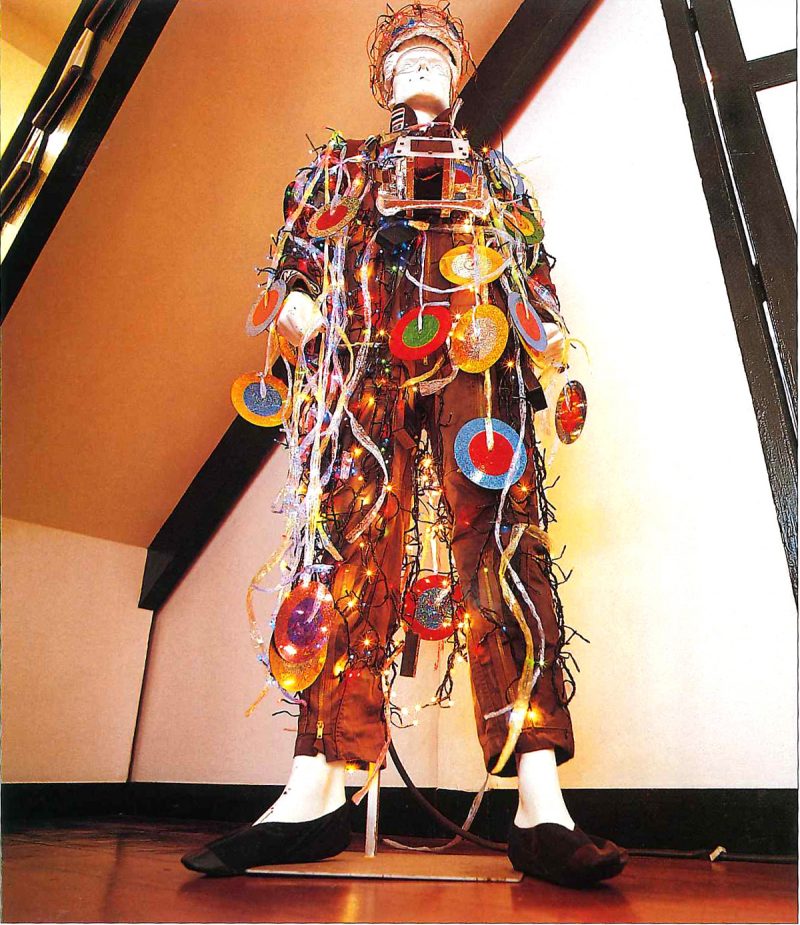
TEXT: SUPITCHA TOVIVICH
FIRST PUBLISHED IN ART4D VOL.96 AUGUST 2003

